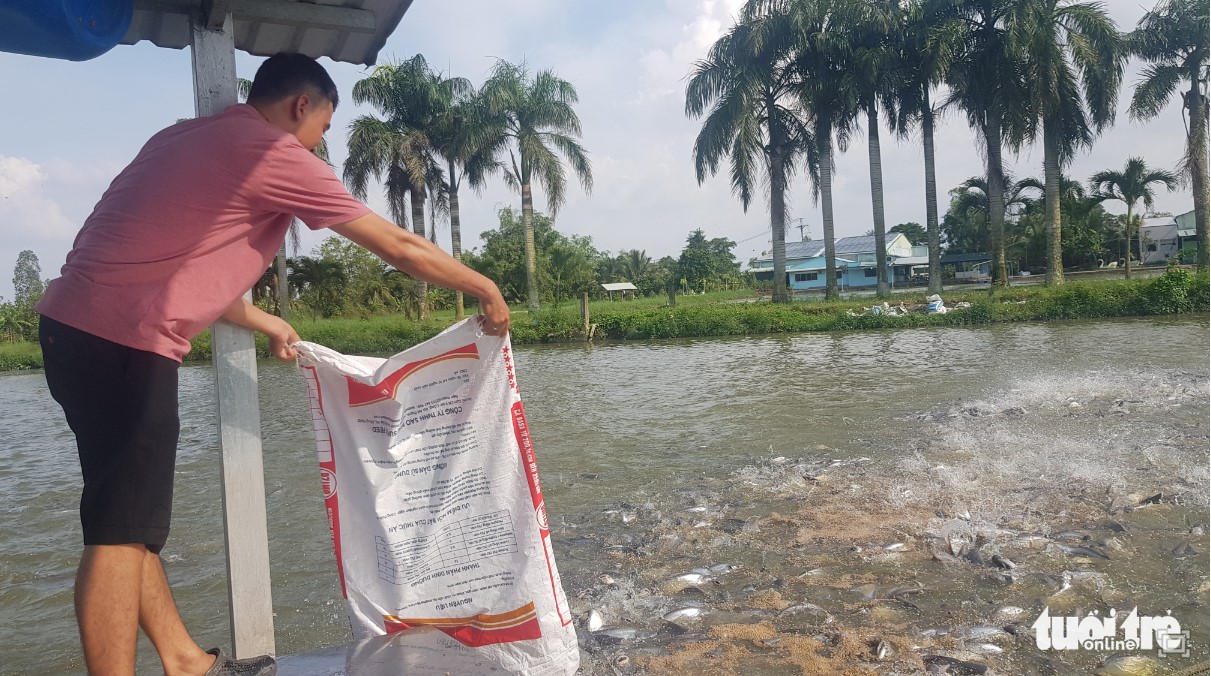An Giang and Dong Thap Provinces, considered the largest suppliers of catfish in Vietnam's Mekong Delta region, are suffering from a significant shortage of high-quality juvenile fish, causing great concerns to fish farmers here.
Due to the poor quality of catfish fingerlings, fish farmers find themselves in a difficult situation as they could harvest less.
In fact, the supply of high-quality juvenile fish can only meet about 15 percent of the fish farmers' needs.
The rest had to be obtained from unknown sources in the market, which are sometimes substandard.
Ha Khuu Duc Thanh, a farmer in My Thanh District, Long Xuyen City, An Giang Province, said that in the past fourteen years of fish farming, he had never seen such low-quality juvenile fish as now.
The great loss due to poor-quality juvenile fish puts many fish farmers in limbo.
"I just recently released a new school of fry, but just a week later they were all dead and I had to buy another one," Thanh said.
"From this experience, I created a body of water where I can raise the fry myself and take care of them for later seasons.
"I would like to cooperate with companies that provide juvenile fish and fish food but I hope their kind of cooperation is suitable for fish farmers with small water surface."
Speaking to Tuoi Tre (Youth) newspaper about the dearth of catfish offspring, Tran Anh Dung, director of the An Giang Fisheries Department, said the problem has become a serious challenge for fish farmers in many cities and provinces.
Currently, both fish farmers and aquaculture enterprises are facing huge losses because they buy low-quality young fish from unknown suppliers.
"In An Giang, there are four suppliers of baby catfish that can meet about 15 percent of demand, which means that demand exceeds supply," Dung added.
"Against this background, fish farmers have to incur excessive costs if they buy substandard juvenile fish from unknown suppliers."
Vo Be Hien, director of the Dong Thap Fisheries Department, admitted that the survival rate of baby catfish is low due to the mediocre quality of breeding materials.
To solve the problem, the Aquaculture Research Institute No. 2 has conducted a program to improve farmed fish, identifying genes that are not genetically linked to provide provinces with high-quality breeding materials, but the number is still limited.
"Catfish fingerlings are the critical factor," Hien said.
"A school of fish can go down to zero if fish farmers are unlucky enough to buy low-quality fry.
"Low-quality fry can lead to slow growth, higher susceptibility to disease, and weak defenses."
Hien said Dong Thap has asked institutes and universities to supply the province with more good fry as soon as possible.
However, the thousands of fry they have sent to the province cannot meet farmers' demand.
Therefore, farmers and fisheries have to rely on dubious suppliers despite the inferior quality, Hien added.
Like us on Facebook or follow us on Twitter to get the latest news about Vietnam!



















































